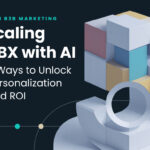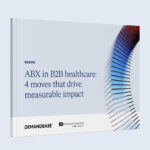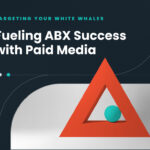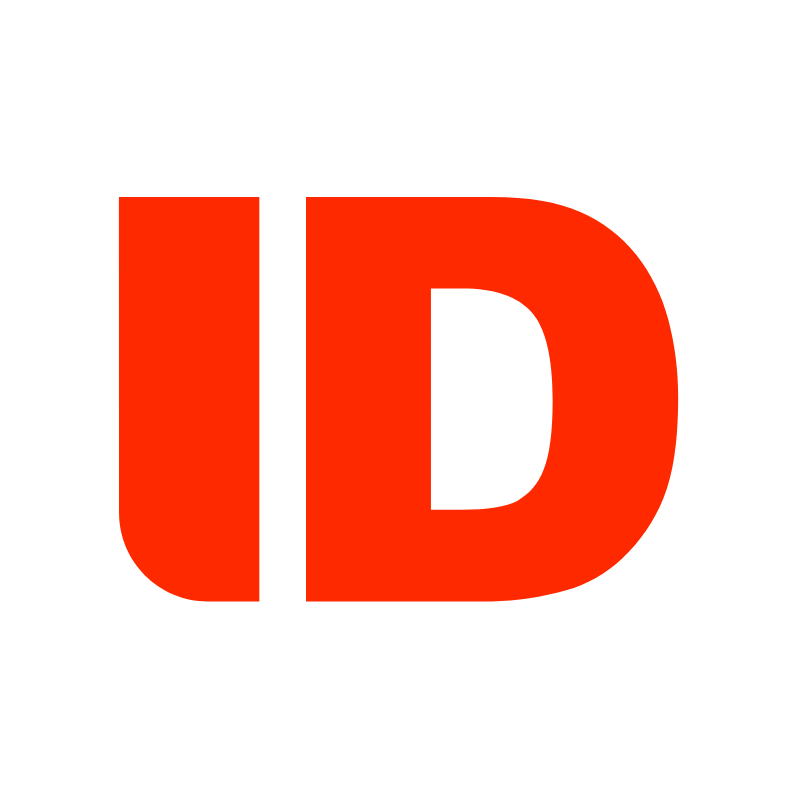For starters, what is a DSP?
A Demand Side Platform, DSP for short, is an automated ad buying platform wherein advertisers and agencies go to purchase digital ad inventory. We love this Mall Analogy, from one of our partners, Basis Technologies — one of the most comprehensive media automation and intelligence platforms serving the complete digital media landscape and industry.
“In short, a DSP is the mall, and the ad exchanges are the stores within the mall. Just like you’d go to the mall to buy clothes from a bunch of stores that stock different inventory, digital ad buyers go to the DSP to access ad inventory from multiple ads exchanges at the same time. As Basis states in their analogy, think of an ad exchange as Gap. Gap is found in most malls and also has its standalone brick-and-mortar stores. This is one of the best ways to picture how exchanges work. Exchanges can integrate with a few DSPs or with every single DSP on the market. So, what that means is, some exchanges are more accessible than others – just like the clothing store. Furthermore, some exchanges are specialty and focus on specific types of inventory – just like the stores in the mall.”
There are a lot of great players in terms of traditional DSPs, the most common and bigger players being Basis Technologies (formerly Centro), The Trade Desk (TTD), Adelphic by Viant, AdForm, StackAdapt, Xandr, and Google’s Display & Video 360 (commonly referred as DV360).
What’s an Account Based Platform, and how does it differ?
An Account Based Platform – if we’re comparing to traditional DSPs – serves as a demand side platform (DSP) built specifically with B2B and Account Based programs in mind. They, unlike DSPs designed for B2C, provide more visibility into performance and engagement of your buying committee at the account level.
A key differentiator is that AB platforms were built specifically for acceleration of pipeline/revenue and account visibility. They came about because no one else, no data providers or DSPs, could offer what the market was demanding. AB platforms have deep graphs of accounts and robust firmographic data which allows advertisers to hone-in on key job title personas. Some platforms such as our partner, Rev, have introduced exegraphic data which helps B2B companies identify future market segments through evaluation of the viability of a new segment by going beyond traditional total addressable market (TAM), analyzes the traits the “fit and ready” targets within a new market, and targets accounts with a high propensity to engage.
These platforms that offer powerful integrations with MAPs (Marketing Automation Platforms), have the ability to incorporate intent as part of the decisioning model (i.e. identifying and prioritizing accounts based on action/engagement), and are able to report on and visualize what’s happening between a brands O&O properties, pipeline movement, and paid ads in market (typically consists of display via proprietary DSP + a LI integration). Now, it is important to call out here, that while running digital ad campaigns is an offering of these platforms (often times an add-on or part of an upgraded package level), it is not the primary function of their offerings, unlike most DSPs which are built specifically geared for managing ad campaigns and media buying.
Some of what we believe to be the biggest players in this space are DemandBase, Terminus, and 6sense.
So, what are the pros and cons of each option?
There are a lot of great players out there for both traditional DSPs and Account Based platforms which, for the most part, offer the same bells and whistles in their respective categories. Who you decide to work with will often come down to a few unique characteristics such as pricing/minimum spend requirements, managed service vs. self-serve, and customer service. Here are some things to consider when evaluating both DSPs and AB Platforms:
- Some platforms require longer term contracts, while some are “pay-to-play”, so make sure you understand what you get and what you don’t get, based on your contract terms.
- Some DSPs have been developed for entry level or novice users while some are catered to power users/experts — make sure you have the resourcing available for the level of complexity involved with your selected platform.
- Evaluate integrations with data providers for smarter targeting, breadth of ad types, verification and attribution reporting, bidding capabilities (i.e. machine learning vs. AI optimization vs. manual bidding), etc.
This is just a starting point as there are a lot of factors to consider. Additionally, both traditional DSPs and AB platforms each have their pros and cons. When evaluating whether a traditional DSP or an AB platform is the right fit, however, here are 5 things to consider when evaluating which route is best for your organization’s current needs:
Cost-efficiency
Traditional DSP
- DSP CPMs are typically much lower and more controllable than going publisher direct and/or utilizing an AB platform.
- Some DSP platforms do also require monthly minimum spends or licensing fees. This is one of the benefits of partnering with a revenue growth agency such as Intelligent Demand, as we are able to leverage our client portfolio as a whole to gain access to volume discounts and pass that savings on to our clients.
- Ability to leverage PMP (private marketplace) and PG (programmatic guarantee) deals in order to target premium publisher inventory and/or high-impact placements without the necessity of contracting individually on each publisher site.
Account Based Platform
- A key differentiator is that AB platforms were built specifically for acceleration of pipeline/revenue and account visibility. These platforms integrate directly with CRM systems, provide lead-to-account matching, and ability to act on B2B data such as intent. As such, these platforms are much more than just an ad buying system and typically come with high-priced and long-term contracts and/or high minimum ad spend.
Targeting Capabilities
Traditional DSP
- The traditional DSPs offer more control over targeting including ability to target a TAL (Target Account List) + persona/ICP (ideal customer profile) through partnerships with Dunn & Bradstreet, Bombora, etc.
- Additionally, depending on the type of partnerships you have with data providers, segments can be dynamically updated within a DSP — such that advertisers aren’t stuck with static audiences, or having to manually update audiences on a regular cadence.
- Offers cookieless targeting solutions in preparation for the deprecation of the cookie.
Account Based Platform
- With the deep data integrations driven by the combination of your first-party data, rich B2B datasets, and behavioral data, AB platforms have the ability to tap into and target real-time buyer intent signals vs. relying on simply reaching job titles assumed to be involved in the buying committee.
- AB platforms have the ability to customize and personalize messages for each member of the buying committee at every stage.
Scale
Traditional DSP
- With the ability to utilize a wide range of data partners and ability to access multiple exchanges, traditional DSPs typically provide wider reach and more accessible inventory throughout the buying committees’ online journeys.
- Some DSP platforms do also require monthly minimum spends or licensing fees. This is one of the benefits of partnering with a revenue growth agency such as Intelligent Demand, as we are able to leverage our client portfolio as a whole to gain access volume discounts and pass that savings on to our clients.
Account Based Platform
- AB platforms and B2B specific data partners can have very limited inventory which can significantly affect your ability to provide full account coverage. For example, through our relationships with the big players in AB platforms, we’ve found that one of the major partners has curated a list of only approximately 4k domains that are whitelisted to deliver ads on. On the same side of the coin, a known leader in the B2B data provider space has approximately 15k sites they run ads on. Even Google/GDN is limited to just the Google ecosystem of sites.
Available Inventory
Traditional DSP
- Most DSPs offer the ability to execute campaigns with a wide range of ad formats from standard display, to video, and audio.
Account Based Platforms
- Most AB platforms are limited to standard display inventory, and the ability to push dynamic segments to LinkedIn.
Reporting Capabilities & Flexibility
Traditional DSP
- For the most part, traditional DSPs do not have the ability to report back on performance at the individual account level, unless the campaigns are configured to target on a 1:1 basis — which is tedious and not conducive to utilizing the budget efficiently. For the purpose of account based programs, you’ll likely fall short.
- Most DSPs have direct API integration into most data management platforms (DMP) and/or data visualization tools making it easier to ingest, analyze, and visualize campaign performance. Here at ID, we utilize Funnel.io to aggregate data from multiple sources including each paid media platform, Google Analytics, and customized sheets in order to analyze trends over time and other meaningful insights.
Account Based Platforms
- For the purpose of Account Based programs, if you need performance data at the account level, this capability, you’ll likely fall short and should consider licensing a DemandBase or Terminus (for example) or working directly with a B2B partner such as Intentsify, Integrate, or Madison Logic, etc..
- While account level data is available, most AB Platforms are very difficult to work with when it comes to data and analytics, transparency, and flexibility of insight visualizations, especially if you want to pull data into another DMP (data management platform).
At this point, you’re probably asking: “but can they play nicely together?”
The short answer is: Yes! They sure can!
A perfect use case is an integrated program that incorporates all stages of the funnel. Consider utilizing each platform at different stages, for example:
- TOFU = DSP with high reach at a cost effective rate, and a mix of ad types (high impact, audio, video, native, mobile specific, takeovers, PMPs, etc.).
- MOFU = AB platform for “smarter” or dynamic targeting of accounts based on segmentation, intent, etc.
- BOFU = DSP or AB Platform for Retargeting
So let’s wrap this up…As a B2B Marketer, which route should you go?
You’ll hate our answer, but…it depends. The route you go will depend so heavily on:
- How mature your organization is when it comes to digital and programmatic strategies.
- If you have the right resources (expertise and headcount) to run campaigns in-house (self-serve).
- What your desired outcomes for your programs are e.g. Do you really need visibility at the account level? Would that be data overload or would that level of detail help inform business decisions?
- How success is measured / the mandatory KPIs and data points needed to prove performance.
In a nutshell, while AB platforms have deeper or “smarter” account level detail, it doesn’t necessarily mean they’re the holy grail. They do not have all the bells and whistles that a DSP has, although, the DSPs also have their shortcomings. That said, you must do your homework and make sure you have SMEs in-house (or consultants) to help evaluate which is right for you and your business, knowing what you’ll get, and more importantly, what you won’t, depending on which way you go. The good news is that there are players out there who have recognized this gap and are working quickly to try and bring more of what DSPs offer to the account based platform world. Additionally, there are experts, like our team here at Intelligent Demand, that geek out on this stuff! Want more inside scoop? Don’t hesitate to reach out. Let’s connect, we’d love to chat!



